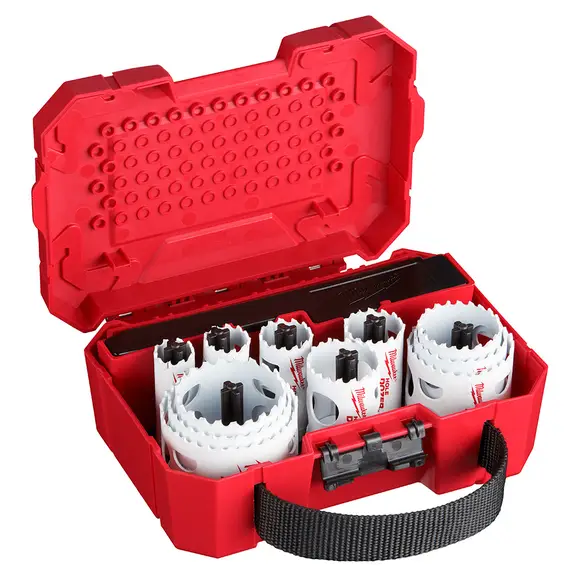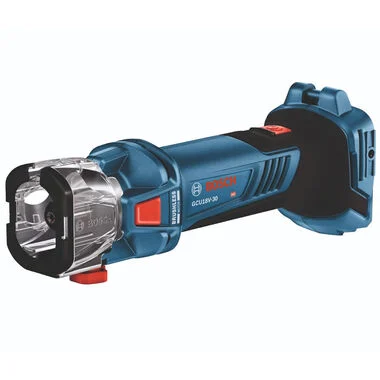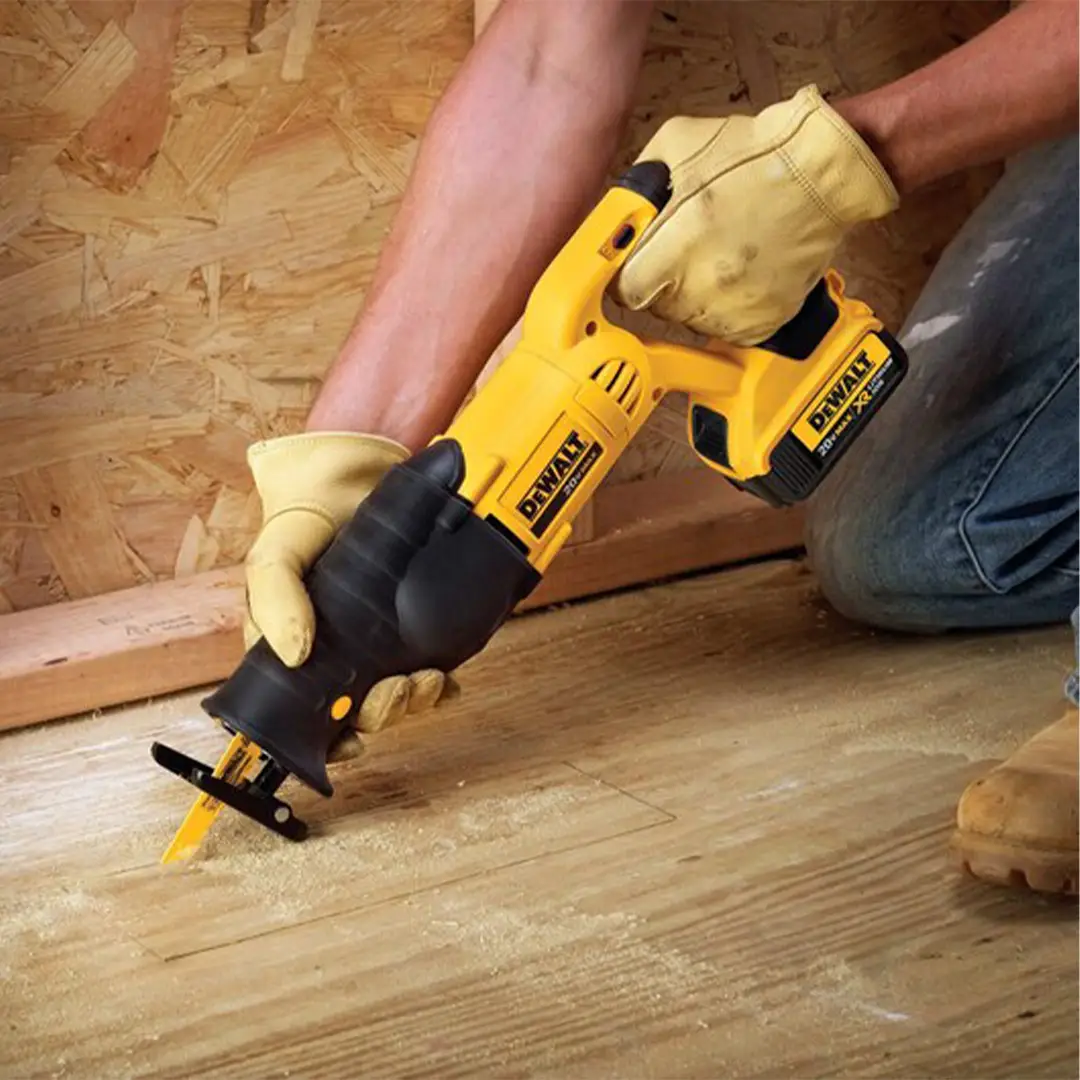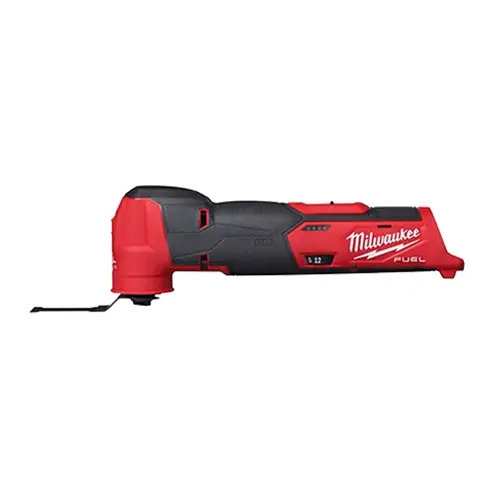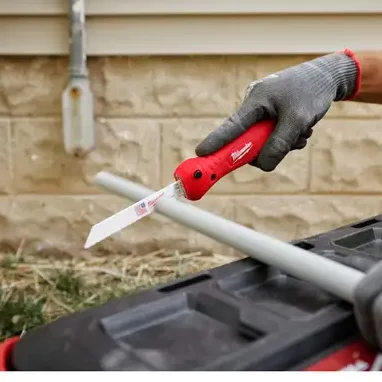|
Getting your Trinity Audio player ready...
|
It’s officially spooky season, and at Ohio Power Tool, we decided to put our tools to a very different kind of test. Not on the jobsite, not through concrete or steel, but through pumpkins.
We wanted to find out once and for all:
what’s the best tool for carving pumpkins?
Five contenders entered the ring, each from a different corner of the toolbox. Some turned out to be surprisingly effective, others turned the studio into a pumpkin crime scene, but all gave us valuable insights. Whether you’re carving with your family or taking your jobsite spirit into Halloween night, here’s how each tool performed.
1. Bi-Metal Hole Saw: Fast, Clean, and Shockingly Satisfying
The bi-metal hole saw ended up being one of the most impressive performers of the day. It attaches to a drill or drill press with an arbor (or mandrel), which holds a pilot bit to start the hole and guide the circular blade as it cuts through the material. Instead of removing everything inside the circle, it cuts only the perimeter, leaving behind a clean “plug” or “core.”
When we tried it on pumpkins, the results were flawless. The hole saw produced perfect circular openings, ideal for eyes, candle holes, or decorative lanterns. If you’ve got a drill and a few hole saw sizes, you can easily experiment with patterns and symmetry that would take much longer by hand.
Normally, these are used for: Installing pipes, conduits, or wiring in electrical or plumbing work, cutting holes for door hardware and locksets and Creating openings in panels or junction boxes.
For pumpkins, it’s fast, simple, and efficient. This one earned five stars as the “Fastest Pumpkin Carving Option.”
2. Drywall Cut-Out Tool (Rotozip)
The Pumpkin Sculptor’s Dream
Next up was the drywall cut-out tool, often referred to as a Rotozip. It’s compact, handheld, and spins up to 25,000 RPM, making it perfect for clean cutouts in drywall, and, as it turns out, for carving detailed pumpkin designs.
On pumpkins, it performed like a precision engraver. The bit glided through the surface effortlessly, allowing for delicate lines, intricate curves, and tiny details that would be nearly impossible with a knife. It’s the perfect option for anyone who treats pumpkin carving as an art form rather than a weekend chore.
Just keep a steady hand, at those speeds, one quick slip can turn your ghost into abstract art.
Professionally, this tool is commonly used for: Cutting openings for electrical boxes and outlets, routing drywall for lights or vents and engraving or trimming soft wall materials.
When it comes to pumpkins, this one’s the best tool for detail work. It’s accurate, lightweight, and surprisingly fun to use.
3. Reciprocating Saw
The Demolition Pumpkin Edition
Then came the reciprocating saw, and chaos followed. Built for power and demolition, this tool uses a straight blade that moves back and forth at high speed to tear through materials. It’s typically used to cut studs, pipes, branches, or even in rescue operations, but on a pumpkin, it’s an entirely different story.
We used a Spyder double-sided blade (SPY-200179) with a plunge tip, designed for cutting into wood and mixed materials. The first plunge created a shower of pumpkin guts, and within seconds, the “carving” became a full demolition project.
While it’s definitely not precise, it’s undeniably effective if the goal is speed or spectacle. On larger pumpkins, like those massive 2,000-pound giants from the local Pumpkin Show, the reciprocating saw would make sense. For standard jack-o’-lanterns, though, it’s overkill in the most entertaining way possible.
Typical uses include, Demolition work and remodeling, cutting metal conduit, PVC, or wood framing and tree trimming or rescue cutting.
If “controlled destruction” sounds like fun, this one’s your winner. Just make sure to have a tarp ready.
4. Oscillating multi-tool
The Swiss Army Knife of Carving
The oscillating multi-tool quickly became the standout performer. Instead of rotating or sawing back and forth, this tool oscillates, moving side-to-side at around 20,000 RPM within a tiny 3°–5° arc. That small, rapid motion allows for precision cutting, sanding, scraping, and grinding in areas where other tools can’t reach.
On pumpkins, it delivered near-perfect results. With a fine cutting blade attached, the multi-tool created clean lines and controlled edges without damaging the pumpkin’s shape. It was easy to handle, smooth, and capable of both deep cuts and surface etching.
Changing blades or widths adds even more flexibility, making it ideal for carvers who want both speed and control.
Professionally, oscillating multi-tools are used for: Flush cutting baseboards, jambs, or flooring, cutting drywall for outlets or fixtures, scraping old caulk, paint, or adhesives and detail sanding and polishing
Available accessories include Bi-metal blades for cutting wood and metal, Carbide blades for hard materials like cement board, Scraper blades for glue and flooring removal and Sanding pads for corners and detailed work
For pumpkin carving, this tool does it all. It’s accurate, forgiving, and versatile — truly the Swiss Army knife of power tools.
5. Jab Saw
The Classic Hand Tool
Finally, we went back to basics with the jab saw. Sometimes called a drywall or keyhole saw, this tool has a pointed blade with coarse teeth and a sturdy handle for one-handed use. The sharp tip lets you pierce directly into material without a pilot hole, perfect for pumpkins.
It might not have the speed or flash of a power tool, but it has something just as valuable: control. The jab saw makes traditional pumpkin carving feel more deliberate and nostalgic. It’s quiet, simple, and easy to handle, even for beginners.
Professionally, jab saws are commonly used for: Cutting openings for electrical boxes or vents, trimming PVC, plastic, or soft wood and enlarging cutouts and quick on-site adjustments.
For pumpkin carving, it’s the safest and most accessible tool of the bunch. It’s also the best choice for families or classrooms where safety matters as much as creativity.
The Final Verdict: Which Tool Wins?
After testing all five, each one proved it could carve a pumpkin in its own way — from precision to pure destruction. Here’s how they stacked up:
| Tool | Best For | Carving Style |
|---|---|---|
| Bi-Metal Hole Saw | Speed and smooth cuts | Clean circles for lanterns or eyes |
| Drywall Cut-Out Tool (Rotozip) | Fine detailing | Artistic and precise carving |
| Reciprocating Saw | Power and chaos | Big pumpkins and fast results |
| Oscillating Multi-Tool | Versatility and control | Clean, detailed cuts |
| Jab Saw | Safety and simplicity | Traditional, hands-on carving |
The oscillating multi-tool came out on top as the overall winner. It provided the best balance of power, control, and versatility, and most users already have one in their toolbox. The hole saw was the fastest option, while the Rotozip was unbeatable for detail work. The recip saw brought the laughs, and the jab saw reminded us that sometimes, simple still works best.
Share Your Pumpkin Creations
Now it’s your turn. Which tool would you use to carve your next pumpkin? Do you prefer precision or power?
Share your carving stories or tag @ohiopowertool on social media to show off your creations. We might feature some of our favorites this season.
All of the tools from this Halloween test — including bi-metal hole saws, oscillating multi-tools, reciprocating saws, drywall cut-out tools, and jab saws are available now at Ohio Power Tool.
Whether you’re working on the jobsite or making Halloween memories, we’ve got the gear, accessories, and expertise to help you get the job done, cleanly, safely, and creatively. Don’t hesitate to reach out at cs@ohiopowertool.com or 614-481-2111 with any questions, comments, or concerns, and be sure to follow us on all your favorite social media channels to stay in the know on all the latest announcements, deals, news, and more!


